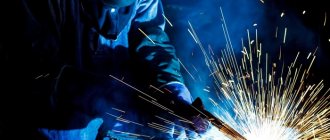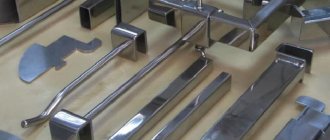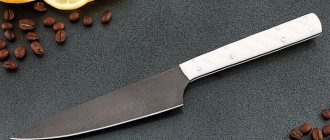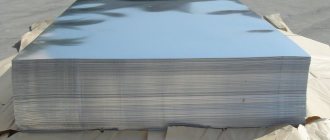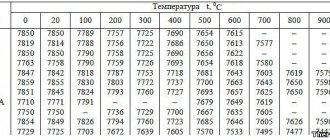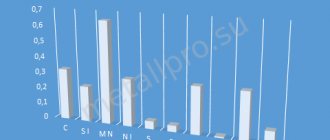General characteristics of steel grade 40ХН2МА
Grade 40ХН2МА is a high-quality structural high-alloy chromium-nickel-molybdenum steel . It is flake-sensitive and difficult to weld, so additional operations must be carried out to obtain welded fasteners; in addition, 40ХН2МА is not sensitive to temper brittleness. It should be noted that products made from this steel are very corrosion-resistant.
The scope of application of 40ХН2МА is very wide
| Substitute: | 40HGT, 40HGR, 30H3MF, 45HN2MFA |
| GOST standards: | GOST 8479-70, GOST 1133-71, GOST 8319.0-75, GOST 2590-2006, GOST 2591-2006, GOST 2879-2006, GOST 103-2006, GOST 1051-73, GOST 4543-71, GOST 7417-75, GOST 8559-75, GOST 8560-78, GOST 10702-78, GOST 14955-77 |
| Application: | crankshafts, valves, connecting rods, connecting rod caps, critical bolts, gears, claw couplings, discs and other heavily loaded parts. Rolls for cold rolling of metals. |
Specifics of marking
The markings of any steel contain numbers and letters. The letters in the marking act as a designation of the metal that is part of the alloy. The most commonly used components are:
- Nickel - (N).
- Tungsten - (B)
- Aluminum - (Y).
- Chrome - (X).
- Vanadium - (F).
- Molybdenum - (M).
- Titan - (T).
Any marking begins with a number indicating the percentage of carbon in a given alloy. In accordance with this factor, it is accepted to distinguish between: low-carbon (less than 0.25% carbon), medium-carbon (from 0.25% to 0.65% carbon) and high-carbon steels (more than 0.65% carbon). Most alloy steels are medium alloy, for example, grade 50HFA (0.5% carbon).
Next to the letter there is often a number indicating the amount of this metal in this alloy. If it is absent, then there is no more than 1.3% metal in it. Many grades of structural steel have an "A" at the end. Its presence indicates that this steel is high-quality, which means a minimum amount of harmful impurities in its composition (as, for example, in steel grade 40ХН2МА).
Such grades of alloy steel as 40KhN2MA, 40KhN, 45KhN2MFA, 50KhFA are very popular. Let's consider their specifics individually.
see stock and prices >>
Chemical composition in % of material 40ХН2МА
| C | Si | Mn | Ni | S | P | Cr | Mo | Cu |
| 0.37 — 0.44 | 0.17 — 0.37 | 0.5 — 0.8 | 1.25 — 1.65 | up to 0.025 | up to 0.025 | 0.6 — 0.9 | 0.15 — 0.25 | up to 0.3 |
Temperature of critical points of material 40ХН2МА.
| Ac1 = 730, Ac3(Acm) = 820, Ar3(Arcm) = 550, Ar1 = 380, Mn = 320 |
Mechanical properties at T=20oC of the material 40ХН2МА.
| Assortment | Size | Eg. | sв | sT | d5 | y | KCU | Thermal change |
| — | mm | — | MPa | MPa | % | % | kJ/m2 | — |
| Bar | F 25 | 1080 | 930 | 12 | 50 | 780 | Quenching and tempering |
| The hardness of the material is 40ХН2МА after annealing, | HB 10 -1 = 269 MPa |
Physical properties of the material 40ХН2МА.
| T | E 10- 5 | a 10 6 | l | r | C | R 10 9 |
| hail | MPa | 1/Grad | W/(m deg) | kg/m3 | J/(kg deg) | Ohm m |
| 20 | 2.15 | 39 | 7850 | 331 | ||
| 100 | 2.11 | 11.6 | 38 | 490 | ||
| 200 | 2.01 | 12.1 | 37 | 506 | ||
| 300 | 1.9 | 12.7 | 37 | 522 | ||
| 400 | 1.77 | 13.2 | 35 | 536 | ||
| 500 | 1.73 | 13.6 | 33 | 565 | ||
| 600 | 13.9 | 31 | ||||
| 700 | 29 | |||||
| 800 | 27 | |||||
| T | E 10- 5 | a 10 6 | l | r | C | R 10 9 |
Technological properties of material 40ХН2МА.
| Weldability: | difficult to weld. |
| Flock Sensitivity: | sensitive. |
| Tendency to temper brittleness: | not inclined. |
Remaining metal steel 40ХН2МА for December-January 2021-2022.
| Name | brand | size | remainder | price |
| Square | 40ХН2МА | 100mm | 0,2 | 260000 |
| Circle | 40ХН2МА | 110mm | 15,195 | 195000 |
| Sheet | 40ХН2МА | 110mm | 1,22 | 195000 |
| Circle | 40ХН2МА | 115mm | 16,378 | 195000 |
| Round forging | 40ХН2МА | 120×2300mm | 0,22 | 249000 |
| Pipe | 40ХН2МА | 121×24mm | 0,49 | 195000 |
| Circle | 40ХН2МА | 1300mm | 1,48 | 195000 |
| Circle | 40ХН2МА | 130mm | 3,335 | 195000 |
| Circle | 40ХН2МА | 142mm | 0,286 | 195000 |
| Pipe | 40ХН2МА | 146×22mm | 0,62 | 195000 |
| Circle | 40ХН2МА | 150mm | 6,24 | 195000 |
| Square | 40ХН2МА | 160mm | 2 | 260000 |
| Circle | 40ХН2МА | 160mm | 14,698 | 195000 |
| Circle | 40ХН2МА | 16mm | 0,229 | 195000 |
| Square | 40ХН2МА | 170mm | 2,13 | 260000 |
| Circle | 40ХН2МА | 170mm | 2,867 | 195000 |
| Circle | 40ХН2МА | 175mm | 0,81 | 195000 |
| Hexagon | 40ХН2МА | 17mm | 0,936 | 310000 |
| Circle | 40ХН2МА | 18.5mm | 1,153 | 195000 |
| Square | 40ХН2МА | 180mm | 0,44 | 260000 |
| Circle | 40ХН2МА | 180mm | 2,73 | 195000 |
| Round forging | 40ХН2МА | 180mm | 0,215 | 260000 |
| Circle | 40ХН2МА | 185mm | 0,213 | 195000 |
| Round forging | 40ХН2МА | 185mm | 0,207 | 260000 |
| Square | 40ХН2МА | 190mm | 1,34 | 195000 |
| Circle | 40ХН2МА | 190mm | 4,94 | 195000 |
| Round forging | 40ХН2МА | 190mm | 0,738 | 260000 |
| Square | 40ХН2МА | 200mm | 0,715 | 195000 |
| Circle | 40ХН2МА | 200mm | 6,806 | 195000 |
| Round forging | 40ХН2МА | 200mm | 0,205 | 260000 |
| Circle | 40ХН2МА | 203mm | 2,286 | 195000 |
| Round forging | 40ХН2МА | 210×600mm | 1,06 | 260000 |
| Square | 40ХН2МА | 210mm | 1,06 | 195000 |
| Circle | 40ХН2МА | 210mm | 0,844 | 195000 |
| Round forging | 40ХН2МА | 210mm | 0,498 | 260000 |
| Square | 40ХН2МА | 220mm | 3,355 | 195000 |
| Circle | 40ХН2МА | 230mm | 0,497 | 195000 |
| Pipe | 40ХН2МА | 237×16mm | 13,2 | 195000 |
| Circle | 40ХН2МА | 240mm | 2,745 | 195000 |
| Round forging | 40ХН2МА | 240mm | 1,105 | 260000 |
| Round forging | 40ХН2МА | 245mm | 0,998 | 260000 |
| Round forging | 40ХН2МА | 250mm | 0,304 | 260000 |
| Circle | 40ХН2МА | 254mm | 0,547 | 195000 |
| Circle | 40ХН2МА | 260mm | 11,126 | 195000 |
| Circle | 40ХН2МА | 270mm | 3,161 | 195000 |
| Square | 40ХН2МА | 280mm | 0,546 | 280000 |
| Round forging | 40ХН2МА | 285mm | 0,22 | 260000 |
| Circle | 40ХН2МА | 28mm | 1,52 | 195000 |
| Round forging | 40ХН2МА | 300mm | 5,89 | 260000 |
| Circle | 40ХН2МА | 30mm | 2,614 | 195000 |
| Circle | 40ХН2МА | 310mm | 7,354 | 195000 |
| Round forging | 40ХН2МА | 310mm | 3,31 | 260000 |
| Circle | 40ХН2МА | 320mm | 2,776 | 195000 |
| Round forging | 40ХН2МА | 320mm | 2,62 | 260000 |
| Circle | 40ХН2МА | 330mm | 1,155 | 195000 |
| Round forging | 40ХН2МА | 330mm | 0,46 | 260000 |
| Circle | 40ХН2МА | 340mm | 5,544 | 195000 |
| Round forging | 40ХН2МА | 340mm | 16,09 | 260000 |
| Round forging | 40ХН2МА | 345mm | 0,811 | 260000 |
| Circle | 40ХН2МА | 34mm | 2,49 | 195000 |
| Round forging | 40ХН2МА | 350×715mm | 0,606 | 260000 |
| Round forging | 40ХН2МА | 350mm | 0,57 | 260000 |
| Circle | 40ХН2МА | 360mm | 4,66 | 195000 |
| Round forging | 40ХН2МА | 360mm | 6,35 | 260000 |
| Circle | 40ХН2МА | 370mm | 0,525 | 195000 |
| Round forging | 40ХН2МА | 370mm | 4,96 | 260000 |
| Round forging | 40ХН2МА | 380mm | 2,735 | 260000 |
| Round forging | 40ХН2МА | 385mm | 1,786 | 260000 |
| Circle | 40ХН2МА | 38mm | 0,204 | 195000 |
| Circle | 40ХН2МА | 390mm | 0,74 | 195000 |
| Round forging | 40ХН2МА | 390mm | 2,005 | 260000 |
| Round forging | 40ХН2МА | 400×800mm | 9,92 | 260000 |
| Round forging | 40ХН2МА | 400×840mm | 4,9 | 260000 |
| Round forging | 40ХН2МА | 400mm | 4,7 | 260000 |
| Round forging | 40ХН2МА | 405mm | 4,52 | 260000 |
| Circle | 40ХН2МА | 40mm | 0,49 | 195000 |
| Round forging | 40ХН2МА | 410mm | 3,63 | 260000 |
| Round forging | 40ХН2МА | 420mm | 6,09 | 260000 |
| Circle | 40ХН2МА | 42mm | 2,568 | 195000 |
| Round forging | 40ХН2МА | 430mm | 4,83 | 260000 |
| Round forging | 40ХН2МА | 440×100mm | 9,92 | 260000 |
| Circle | 40ХН2МА | 440mm | 0,225 | 260000 |
| Round forging | 40ХН2МА | 440mm | 6,11 | 260000 |
| Square | 40ХН2МА | 450mm | 1 | 280000 |
| Round forging | 40ХН2МА | 450mm | 5,02 | 260000 |
| Circle | 40ХН2МА | 45mm | 0,228 | 195000 |
| Circle | 40ХН2МА | 460mm | 7,05 | 260000 |
| Round forging | 40ХН2МА | 460mm | 13,16 | 260000 |
| Pipe | 40ХН2МА | 465×21mm | 2,805 | 275000 |
| Circle | 40ХН2МА | 470mm | 0,335 | 260000 |
| Round forging | 40ХН2МА | 470mm | 4,95 | 260000 |
| Round forging | 40ХН2МА | 475×290mm | 0,426 | 260000 |
| Round forging | 40ХН2МА | 480×480mm | 1,094 | 260000 |
| Circle | 40ХН2МА | 480mm | 0,72 | 260000 |
| Round forging | 40ХН2МА | 480mm | 7,33 | 260000 |
| Circle | 40ХН2МА | 48mm | 0,318 | 195000 |
| Round forging | 40ХН2МА | 490×195mm | 0,296 | 260000 |
| Round forging | 40ХН2МА | 490mm | 11,77 | 260000 |
| Round forging | 40ХН2МА | 500mm | 7,35 | 260000 |
| Circle | 40ХН2МА | 50mm | 8,422 | 195000 |
| Circle | 40ХН2МА | 520mm | 0,4 | 260000 |
| Round forging | 40ХН2МА | 520mm | 6,79 | 260000 |
| Round forging | 40ХН2МА | 525×220mm | 0,372 | 260000 |
| Round forging | 40ХН2МА | 525mm | 0,54 | 260000 |
| Circle | 40ХН2МА | 52mm | 3,515 | 195000 |
| Pipe | 40ХН2МА | 530×25mm | 0,436 | 260000 |
| Round forging | 40ХН2МА | 530mm | 16,7 | 260000 |
| Circle | 40ХН2МА | 540mm | 8,06 | 260000 |
| Circle | 40ХН2МА | 550mm | 0,32 | 260000 |
| Round forging | 40ХН2МА | 550mm | 7,4 | 260000 |
| Circle | 40ХН2МА | 555mm | 0,37 | 260000 |
| Circle | 40ХН2МА | 55mm | 0,242 | 195000 |
| Circle | 40ХН2МА | 560mm | 8,98 | 260000 |
| Round forging | 40ХН2МА | 560mm | 6,87 | 260000 |
| Round forging | 40ХН2МА | 570×2100mm | 1 | 260000 |
| Round forging | 40ХН2МА | 580×1020mm | 8,555 | 260000 |
| Circle | 40ХН2МА | 580mm | 8,77 | 260000 |
| Round forging | 40ХН2МА | 580mm | 7,64 | 260000 |
| Circle | 40ХН2МА | 590mm | 2,9 | 260000 |
| Round forging | 40ХН2МА | 590mm | 3,302 | 260000 |
| Round forging | 40ХН2МА | 595mm | 3,274 | 260000 |
| Round forging | 40ХН2МА | 600mm | 6,01 | 260000 |
| Round forging | 40ХН2МА | 605mm | 0,2 | 260000 |
| Round forging | 40ХН2МА | 610×1380mm | 10,2 | 260000 |
| Round forging | 40ХН2МА | 610mm | 6,61 | 260000 |
| Round forging | 40ХН2МА | 620mm | 0,45 | 260000 |
| Round forging | 40ХН2МА | 640mm | 8 | 260000 |
| Circle | 40ХН2МА | 65mm | 1,997 | 195000 |
| Round forging | 40ХН2МА | 660mm | 6,93 | 260000 |
| Round forging | 40ХН2МА | 670mm | 3,965 | 260000 |
| Round forging | 40ХН2МА | 680mm | 8,05 | 260000 |
| Round forging | 40ХН2МА | 690mm | 1,327 | 260000 |
| Round forging | 40ХН2МА | 700mm | 8,58 | 260000 |
| Round forging | 40ХН2МА | 708mm | 1,545 | 260000 |
| Round forging | 40ХН2МА | 720mm | 8 | 260000 |
| Circle | 40ХН2МА | 750mm | 1,59 | 260000 |
| Round forging | 40ХН2МА | 800×730mm | 1 | 260000 |
| Circle | 40ХН2МА | 800mm | 0,98 | 260000 |
| Round forging | 40ХН2МА | 800mm | 8,7 | 260000 |
| Circle | 40ХН2МА | 80mm | 1,855 | 195000 |
| Round forging | 40ХН2МА | 850mm | 1,594 | 260000 |
| Circle | 40ХН2МА | 85mm | 0,976 | 195000 |
| Round forging | 40ХН2МА | 870mm | 7,07 | 260000 |
| Round forging | 40ХН2МА | 900mm | 3,47 | 260000 |
| Circle | 40ХН2МА | 90mm | 2,386 | 195000 |
| Round forging | 40ХН2МА | 910mm | 1,8 | 260000 |
| Round forging | 40ХН2МА | 930mm | 2,01 | 260000 |
| Round forging | 40ХН2МА | 950mm | 1,26 | 260000 |
| Pipe | 40ХН2МА | 95×9.5mm | 4,395 | 260000 |
| Circle | 40ХН2МА | 95mm | 5,515 | 195000 |
| Circle | 40ХН2МА | 980mm | 1,296 | 260000 |
40ХН
Chrome-nickel steel grade 40ХН contains 0.4% carbon, and chromium and nickel in almost equal quantities (less than 1.3%). The total amount is less than 3%, so the steel is considered medium-alloyed and of high quality. Products are produced in the form of rolled products - forged blanks, silver pieces and thick sheets.
Steel grade 40ХН is characterized by increased sensitivity to flakes and a tendency to temper brittleness. For heat treatment of 40ХН, the standard method is used - hardening (in water or oil) and subsequent tempering. Such procedures can significantly increase tensile strength and endurance. 40ХН grade steel is actively used to create critical parts that are subsequently subjected to increased loads: shafts, couplings, levers, gears and many others. As a rule, they are subject to increased strength requirements.
50HFA
The composition of chrome vanadium steel grade 50HFA includes 0.5% carbon and less than 1.3% chromium and vanadium. At the end of the marking there is the letter “A”, which indicates the high quality of this steel. The total amount of chemical additives is about 3%, so grade 50HFA is a representative of the class of medium-alloy steels. Steel is not prone to temper brittleness and is not sensitive to flakes. It is subjected to hardening and tempering, due to which this grade has a high limit of endurance, elasticity and hardness.
Steel grade 50HFA is characterized by a narrow field of application. It is used for the manufacture of critical parts operated at high temperatures (up to 290°C), for example, measuring tapes or springs. Finished springs are often subjected to surface saturation with nitrogen, which increases the strength of the alloy. Manufacturers of the 50HFA grade produce long products in the form of calibrated and ground rods, strips and forgings.
Read about other steel brands here
Steel 08ХМЧА Moscow and Moscow region
Steel has a wide range of applications in mechanical engineering, manufacturing, construction, shipbuilding, aircraft manufacturing and many other industries. There are many grades of steel, most of them are made to order, there are grades that are constantly in stock due to regular demand. The Resurs company sells 08ХМЧА steel directly from the manufacturer. With constant demand, we are ready to offer mutually beneficial terms for the supply of many grades of steel. Including 08HMCA.
The favorable price for the 08ХМЧА brand is determined by the minimum markup and the absence of intermediaries. We take full responsibility for the supplied material and guarantee the quality of delivery. The cost of products is determined by warehouse and logistics costs; we have the ability to supply steel directly from the manufacturer’s plant, this allows our clients to run their business stably.
45ХН2МФА
Chromium-nickel-molybdenum-vanadium steel grade 45ХН2МФА has a rich composition of metals: 0.45% carbon, less than 1.3% chromium, molybdenum and vanadium, 2% nickel. In total, no more than 6% of alloyed additives are obtained, so the steel is a representative of the medium alloy category. The amount of harmful impurities in the alloy is minimal, therefore the 45ХН2МФА brand is considered high quality.
Steel is not prone to temper brittleness due to the molybdenum content. Hardening at high temperatures (about 850oC) and oil are used as heat treatment. Immediately after use a tempering temperature of 450°C. Grade 45ХН2МФА is used for the manufacture of parts operated under increased loads. It is actively used in various fields of industry. The product range includes rods, strips, silver pieces and forgings. If necessary, this brand can be replaced with the 40ХН2МА brand.
Which steels are nitrided?
For nitriding, both carbon and alloy steels are used, in which the carbon content is 0.3-0.5%. The best results can be obtained by using steel with alloying metals that form the most heat-resistant and hard nitrides. Thus, the nitriding process is most effective for alloy steels that contain aluminum, molybdenum, chromium and similar metals. Steels with this composition are called nitralloy. Molybdenum, in particular, prevents temper brittleness caused by the slow cooling of steel after the nitrogen saturation process. Characteristics of steel after nitriding:
- Hardness of carbon steel - HV 200-250;
- Alloyed - HV 600-800;
- Nitralloyev up to HV 1200 and even higher.
At the same time that the hardness becomes higher through alloying compounds, the thickness of the nitrided layer becomes lower. The thinnest layer is formed by steels with elements of chromium, tungsten, nickel, and molybdenum.
Recommended steel grades
The use of a particular grade of steel depends on the subsequent use of the metal element. Recommended grades for nitriding depending on the purpose of the products:
- If it is necessary to obtain parts with high surface hardness, steel grade 38Х2МУА is used. It is worth noting that it contains aluminum, which leads to low deformation resistance of the product. Whereas the use of grades that do not contain aluminum significantly reduces the surface hardness and its wear resistance, although it makes it possible to create more complex structures;
- For machine tool building, improved alloy steel grades 40X, 40HFA are used;
- For parts subjected to cyclic bending loads - steel grades 30Kh3M, 38KhGM, 38KhNMFA, 38KhN3MA;
- For fuel units, the parts of which must be manufactured with high precision - steel grade 30Х3МФ1. To obtain a higher hardness of the nitrogen-saturated layer, this grade of steel is alloyed with silicon.
Description and scope of application of various steel grades, in particular u10, 18khgt and 20
Entering any hardware store, you can see various tools that many of us used when carrying out repairs in a country house, and some, due to their profession, used at work. However, few people thought about the fact that the material for the manufacture of these tools are different grades of steel. All tools are divided into three categories - cutting tools, measuring tools and dies. As for the requirements for these three categories, it is worth saying that measuring instruments must be wear-resistant, hard and able to maintain their original appearance during long-term use. Dies are subject to requirements such as hardness, toughness, crack resistance and wear resistance. Cutting tools must have hardness, heat and wear resistance.
What is U10 steel usually used for?
A popular material that is used in the manufacture of various tools, and much more, is grade U10 steel. Based on their name y10, we can conclude that this grade is carbon steel, as evidenced by the letter “y”, and the amount of carbon is no more than 0.10%. As a rule, drills, screwdrivers, wire, files, various carpentry tools, and so on are made from U10 steel. Despite its advantages, U10 steel also has disadvantages, such as low heat resistance, which leads to a loss of hardness of this material at temperatures above 200 degrees Celsius.
Purpose of steel 18хгт
In addition to tool steel, structural alloy chromium-manganese grade 18xgt gost steel is widely used. This grade of steel is used where parts require core toughness, increased strength, surface hardness, and much more. Substitutes for 18KhGT steel are steel 25KhGT, 30KhGT, 12Kh2N4A, 12KhN3A, 20KhN2M, 20KhGR and 14KhGSN2MA. The most popular products made from 18xgt steel are split rings, collets, friction discs, spring washers, axle shafts, crankshafts, gears and the like.
Purpose of steel 20
A representative of the structural high-quality carbon steel grade can be called steel 20. The main purpose of this steel grade is the production of impact-stamping, measuring and cutting tools. This choice is largely related to the hardness, wear resistance and strength of steel grade 20. It would not be out of place to highlight such qualities of steel 20 as flexibility to hardening in oil, punctureability and resistance to deformation. This grade of steel contains tungsten, chromium and vanadium, which provides it with hardness and wear resistance.
| Previous | Next |
Technological properties
| Name | Meaning |
| Weldability | Difficult to weld. Welding method: RDS. Heating and subsequent heat treatment are required. |
| Tendency to temper brittleness | Not inclined. |
| Forging temperature | Start - 1220 °C, end - 800 °C. Sections up to 80 mm - annealing with recrystallization, two supercoolings, tempering are recommended. |
| Flock sensitivity | Sensitive. |
| Machinability | In the hot-rolled state at HB 228-235 and sB=560 MPa Kn solid alloy=0.7 Kn b.st.=0.4. |
| Macrostructure and contamination | When checking for fractures in the longitudinal direction and transverse templates taken from finished rolled products, the macrostructure of steel should not have shrinkage cavities, friability, bubbles, cracks, delaminations, slag inclusions and flakes, as well as fracture defects listed in Appendix 3 of GOST 10243. Central porosity, point heterogeneity and segregation square should not exceed 1 point; layer-by-layer crystallization and light contour - 3 points of the GOST 10243 standard scales. All other defects provided for by GOST 10243 are not allowed. Contamination of steel with non-metallic inclusions should be no higher than the average score (in points): for point oxides 1.5, for line oxides 2.0, for brittle silicates 1.0, for plastic silicates 1.0, for non-deformable silicates 2.5 , for sulfides 2.5, for nitrides line and dot 1.0. |
Types of Nitrided Steels
Both carbon and alloy steels, characterized by a carbon content in the range of 0.3–0.5%, can be processed using nitriding technology. The maximum effect when using such a technological operation can be achieved if steels are subjected to it, the chemical composition of which includes alloying elements that form hard and heat-resistant nitrides. Such elements, in particular, include molybdenum, aluminum, chromium and other metals with similar characteristics. Steels containing molybdenum are not subject to such a negative phenomenon as temper brittleness, which occurs when a steel product cools slowly. After nitriding, steels of various grades acquire the following hardness:
Hardness of steels after nitriding
Alloying elements found in the chemical composition of steel increase the hardness of the nitrided layer, but at the same time reduce its thickness. The thickness of the nitrided layer is most actively influenced by chemical elements such as tungsten, molybdenum, chromium and nickel.
38Х2МУА This is steel, which, after nitriding, is characterized by high hardness of the outer surface. Aluminum contained in the chemical composition of such steel reduces the deformation resistance of the product, but at the same time helps to increase the hardness and wear resistance of its outer surface. The exclusion of aluminum from the chemical composition of steel makes it possible to create products of more complex configurations from it.
40X, 40HFA
These alloy steels are used for the manufacture of parts used in the machine tool industry.
30Х3М, 38ХГМ, 38ХНММА, 38ХН3МА
These steels are used for the production of products that are subjected to frequent cyclic bending loads during their operation.
30Х3МФ1
Products are made from this steel alloy, the accuracy of whose geometric parameters is subject to high demands. To impart higher hardness to parts made of this steel (these are mainly parts of fuel equipment), silicon can be added to its chemical composition.
Characteristics of some steels after nitriding
Decoding
Decoding of steel 40ХН2МА includes information:
- 40 – 0.4% carbon;
- X – less than 1% chromium;
- H2 – 2% nickel;
- M – up to 1% molybdenum;
- A – high quality steel (minimum amount of sulfur and phosphorus in the composition).
This is a strong, tough metal, which during heat treatment is calcined to a considerable depth. Alloying components are designed to improve strength and durability, and molybdenum facilitates heat treatment.
Chemical composition
The alloy contains a maximum of:
Each of the components improves the characteristics of 40ХН2МА steel. Chromium and nickel provide hardness and corrosion resistance, copper - viscosity and thermal conductivity, manganese and silicon - bind free iron, reduce the influence of sulfur and phosphorus.
The main physical characteristics of the metal are:
- electrical resistivity;
- Young's modulus;
- density (7850 kg/m3);
- heat capacity;
- coefficient of thermal conductivity and thermal expansion.
Depending on the heating during testing, the results may vary. This allows you to determine the optimal area of operation of the structure.
Application
Structural steel 40ХН2МА is not subject to brittle fracture after tempering, which is due to the presence of molybdenum. Due to its high strength, the material can be used for the production of structures used in production and operating under heavy loads.
The following products are widely used:
- rolls for cold rolling of alloys;
- disks and loaded parts;
- brackets;
- claw couplings;
- hardware;
- solid rolled rings;
- fittings for pipelines;
- products for the aircraft industry operating at +500 degrees.
Specifications
The high mechanical properties of 40ХН2МА are due to:
| hardness | 270 MPa; |
| yield area | 930 MPa; |
| density | 7850 kg/m3; |
| tensile elongation | 12%; |
| tensile strength | 1080 MPa. |
The cost of steel is at least 50 rubles/kg. The final price depends on delivery conditions, release form and volume.
Assortment
Products made from this alloy include:
- gears;
- bolts with a high class of responsibility;
- connecting rod shafts and covers for them;
- valves;
- crankshafts.
Production is carried out in accordance with the requirements of regulatory documents. Manufacturing involves performing a large number of technological processes, one of which is mechanical processing. It is designed to increase mechanical strength and the required appearance. In our company you can choose any type of rental.
Heat treatment
Steel 40ХН2МА – medium-carbon alloyed hypoeutectoid steel.
Heating hardened steels to temperatures not exceeding A1 is called tempering. Complex heat treatment consisting of full hardening (steel is heated to a temperature above A3) and high tempering
(500-680 °C) structural steels are called improvement. Improvement of this steel, in contrast to normalization, provides an increased yield strength in combination with good ductility and toughness, and high resistance to crack development. In addition, the cold brittleness threshold is reduced.
For this steel, the optimal heat treatment mode is quenching at 850°C. Hardening is carried out in water, followed by tempering at 620°C in oil.
Ac3 (820 o C)
Ac1 (730 o C) water 620 o C Mn
F+P M Sotp
Rice. 1. Heat treatment mode for steel 40ХН2МА
Steel 08ХМЧА Moscow and Moscow region
Steel has a wide range of applications in mechanical engineering, manufacturing, construction, shipbuilding, aircraft manufacturing and many other industries. There are many grades of steel, most of them are made to order, there are grades that are constantly in stock due to regular demand. The Resurs company sells 08ХМЧА steel directly from the manufacturer. With constant demand, we are ready to offer mutually beneficial terms for the supply of many grades of steel. Including 08HMCA.
The favorable price for the 08ХМЧА brand is determined by the minimum markup and the absence of intermediaries. We take full responsibility for the supplied material and guarantee the quality of delivery. The cost of products is determined by warehouse and logistics costs; we have the ability to supply steel directly from the manufacturer’s plant, this allows our clients to run their business stably.
Compound
We are sure: it is no secret to readers that an alloy of iron and carbon is steel. Pure steel, to be precise. However, such material is not always suitable for use. It is in order to improve the initial properties of steel that various elements from the well-known periodic table are added to its composition, the presence of which in the composition in a certain proportion gives the alloy certain properties such as increased wear resistance and oxidation resistance.
Steel 40ХН was no exception, the characteristics of which directly follow from the alloy composition, which looks like this:
- 0.4% carbon;
- 0.6% chromium;
- 0.65% manganese;
- 0.27% silicon;
- 1.2% nickel;
- 0.3% copper.
Alas, smelting technology cannot guarantee the complete absence of harmful impurities in the composition of 40ХН steel. The characteristics do not deteriorate significantly due to their presence, since the percentage of such impurities does not exceed 0.035%.
